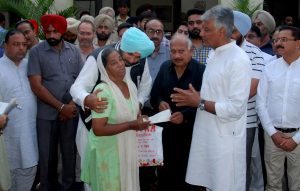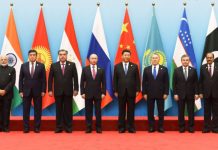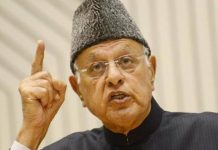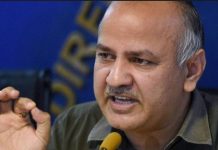 With his stirring words, the prime minister had emphasised that Indian Railway is the engine of growth for the nation. Years later, experts are asking whether the engine is capable of hauling even its own weight, let alone hoisting the burden of economic development on its shoulders.
With his stirring words, the prime minister had emphasised that Indian Railway is the engine of growth for the nation. Years later, experts are asking whether the engine is capable of hauling even its own weight, let alone hoisting the burden of economic development on its shoulders.
Consider the financials. Consequent to acceptance of the Seventh Pay Commission report, Railways will have to bear an additional burden of 40,000 crore. This will lead to its balance sheet, already worn thin, developing a big hole in the centre. There is no way that Railways can meet this massive burden considering its current trends of revenue and expenditure. The expected revenue earning by the railways is of the order of 150,000 crore for the year. Currently, it has an operating ratio of 93, meaning out of every one rupee earned by the railways, 93 paisa is spent as operational expenses. The remaining 7 paisa, amounting to 10,500 crore of the total, is surplus.
Mind it, this ‘surplus’ is what should ideally be used to carry out regular maintenance work and replace its aged assets, thereby ensuring passenger safety. On condition of anonymity, some officials from the Railways say that General Managers of different railway zones are cribbing that they have funds only for jhadu-pocha (sweeping-mopping) of platforms, nothing to carry out any infrastructural improvement.
The narrow margin of revenue over expenditure also affects an entity’s ability to raise capital from any source, as there will be a question mark on the viability of investments. The Railway Ministry constituted a committee to examine the cost of funds. A report on various means to raise funds has been submitted to Niti Ayog. Based on some case studies, it emerges that the cost of external funds on face value appears to be of low interest of libor+1 to 2 percent. However, if currency fluctuation or the cost of hedging currency is taken into
account, this goes as high as 8-8.5 percent. Therefore, at such low profitability, railway on stand-alone basis would not be able to justify borrowing of funds either from the domestic market or from global banks or funds and it would need the support of the Finance Ministry.
It would not be difficult for Railway Minister Piyush Goyal, a chartered accountant by training, to understand this fact, which is staring him in the face. In its history of seven decades, the Railways has never shown a negative Profit and Loss Account. Imagine, if in the upcoming Union Budget, a handpicked minister considered for his acumen presents first time a loss-making rail budget, no account of explanation would suffice to silence the roar from Opposition benches. Even if we consider the social burden of railways — specifically, subsidies under social obligation — this is estimated to be about 25,000 crore every year. The whopping losses would be difficult to be justified. Which is why a smart solution has been found: merge the rail budget with the general budget, transfer the burden of subsidies, pension, fuel bill. Present a clean balance sheet and do a good window dressing!
But is Goyal to blame for such a financial mess? Surely not. The rot set in the system out of electoral compulsions. The closest analogy that can be drawn is that of State Electricity Boards, that dole out free electricity, though these are on the brinks of collapse. Even a new entrant like Aam Aadmi Party, supposedly led by scrupulous young intellectuals, has been descending to lower level than the conventional parties in extending freebies. These will have repercussions on successive governments.
Railways earns about 39,500 crore every year from passenger traffic, carrying almost 900 crore passengers for the year. Thus, on average, each passenger pays 40 for an average distance of about 140 km travelled. Fare for sleeper class is around 60 paisa per km.
Although these figures are little misleading as they are being averaged out over different classes of journey and with varied classes of trains (and there are subsidised fares for various classes of people), yet they give a fairly good estimate for purposes of comparison with state-run buses.
Travel by any normal state transport bus on average costs about 1.50 per km as against this the normal train fare is merely about 40-60 paisa per km. This prompts one to conclude that the passenger fare on railways is merely one-fourth of the fare on ordinary buses, which appears to be anomalous. The passenger segment of Railways is bleeding due to this aberrant decisions.
Imagine, if Railways could charge the same fare as that of state transport buses, its passenger segment revenue would go up to 100,000 crore, creating a huge surplus of 60,000 crore which may be utilised to provide world class passenger amenities and infrastructure — which is what every class of passenger aspires for.
Social burden
Railways is a mammoth national organisation with the potential to please the electorate through many populist decisions. Some of them offer instant gratification, such as opening up new stations, introducing new trains, opening a new level crossing gate to provide passage to some village, building a bridge or subway. Even introducing a new stop for fast
Express trains has wide implications on the popularity of the Railway Minister, though the rationale may be questionable.
Such has been the charm of this ministry that in every coalition government in the past, support from the coalition partner has come with the precondition of the railway portfolio being part of the deal. Successively, from Ram Vilas Paswan to Nitish Kumar, Mamata Banerjee to Lalu Prasad Yadav, each one has exploited the Railways to extend his popularity in his own bastion. While the cost of operations continues to rise with increasing wages, fuel and electricity and road transport cost increasing in tandem, yet each of the ministers tried to prove a point — that they could run the system as efficiently or better than the previous one — without raising passenger fares. Even Prabhu also could not rise above the allurement of using this great institution to nurse his own constituency Mumbai, where no rationalisation of suburban fares has been undertaken. Also, many a railway project is being sanctioned for Mumbai which does not weigh correctly on economic balance. Successive railway ministers tried to prove that they could manage without raising passenger fares, despite rising costs

fencing track
The public sector has ushered in economic reforms, as we call them, in two major sectors:
petroleum pricing and fertiliser subsidy. These were swallowing up a big chunk of subsidy from the state exchequer. However, the Railways never forcefully put forth a case for rationalisation of investments and revenue based on fundamental economic principles. Some half-hearted efforts to increase fares at reasonably low incremental levels were thwarted by Parliament. One of the reasons for Railways not being able to take up the case with vigour is perhaps its weak bureaucracy. The Railway Board performs the combined function of policy as well as operation, and is manned by career professionals who are pliable as they carry the baggage of their past field workings. Railway Ministers have unlimited power to get their desired outcomes from this pliable Board and bureaucracy.
Surge pricing
Unable to achieve an increase in passenger fares, the Railway Board time and again resorted to the easy way out, raising fares for upper-class seats, and for Rajdhani and Shatabdi trains, which have now started feeling the heat of competition from airlines. These trains are profit making but a series of wrong decisions may plunge them into the red. Recently, the Railways announced a ‘surge pricing’ mechanism that primarily emerges out of helplessness to stem the rot and to subvert the tradition of not tinkering with normal subsidised passenger fare.
About 12,000 passenger trains traverse the country daily. Out of this, there are only 42 Rajdhanis,46 Shatabdis and 54 Durontos, which means they make up merely 1.25 percent of the total trains plying currently. While the fare on these train is already in the range of almost 2 per km as against 37 paisa fare on normal trains, it is surely exploiting more and more the goose that lays the golden egg.
The Mumbai suburban rail network is constantly on the losing side. The ticket cost of travel on suburban is merely 30 paisa per km against BEST bus fares which vary from 4 per km to 1.3 per km. For a monthly season pass, BEST charges 25. No wonder, Railways lose 1,500 crore from the city’s rail traffic, thanks to the heavy subsidy on the suburban ticket.
 Surge pricing might make the higher income passenger, even some loyal customers, decide to fly instead of boarding a train. A first class traveller in a suburban train need not be subsidised so heavily. The cost should be journey based, on the pattern of metro trains. This alone would give Railways more revenue than the resort to surge pricing. This proves that the Railways is always most cautious about the constituency of its minister.
Surge pricing might make the higher income passenger, even some loyal customers, decide to fly instead of boarding a train. A first class traveller in a suburban train need not be subsidised so heavily. The cost should be journey based, on the pattern of metro trains. This alone would give Railways more revenue than the resort to surge pricing. This proves that the Railways is always most cautious about the constituency of its minister.
The surge pricing formula is that after every 10 percent seats are booked, the fare would go up by 10 percent. If we work out the average price of tickets on these three types of trains will surge by a whopping 35 percent, excluding the cost from Tatkal tickets, which are pegged at 50 percent extra fare.
Railways justifies the increase by saying the cost per passenger to railway is 73 paisa, whereas it recovers only 37 paisa per km. This is an even poorer argument for this increase, as in these trains, the price a passenger pays per km is already as high as 2-2.5. As per the initial announcement of the Railways, it is flexible in approach and will watch the outcomes before taking a final decision. But it already looks ill conceived. There is also a suspicion that Railways wants to use this backdoor entry to introduce this concept in the entire reservation system, which would effectively increase fares 35 percent across the board. The three trains are already in the higher bracket of passenger fares and such a significant increase could create a backlash.
After the introduction of surge pricing, a Shatabdi ticket from Gurugram to Jaipur which costs 500 now goes up to 875 if booked at the eleventh hour. On this route, Volvo buses are far cheaper, with almost similar comfort and the same time taken. For long distances, even travel by air would be cheaper. For instance, Rajdhani from Mumbai to Delhi costs around 2,800. If we consider the highest increase after 50 percent tickets are booked, then the 1.5 times pricing will make the cost of a ticket around 4,000. However, today air tickets are available in plenty which would be cheaper or equivalent to this price. Besides, air travel has its own advantages in terms of glamour and time saving.
Although the idea of the Railways could be to observe the behaviour pattern of passengers, it might make the higher income passenger, even some loyal customers, turn their backs on the Railways. No engine of growth
As per the White Paper, the contribution of Railways to GDP has drastically gone down to 0.9 percent. As compared to this, road transport is contributing 4.9 percent of GDP. Railways is steadily losing its share to road as the continuous increase in freight has made Indian Railway one of the most expensive freight amongst the major countries where rail plays a significant in transporting goods. Even if one compares the freight cost on Indian Railways as 1 unit per ton-km, cost in China, Russia and USA is 0.58, 0.75 and 0.51 respectively. So no wonder these Duronto, Shatabdi and Rajdhani would soon give way to air. Is there a conspiracy to boost the airlines at the cost of the public sector giant?
One simple example of irrational increase in freight, putting Railways out of the competition, is the cost of transporting HF cows from Bengaluru to Delhi for setting up a dairy in northern India. Railway charges 3 lakh per wagon which can hold 20 cows, taking the cost of transporting each cow to 15,000. Over and above this is the cost of transfer from railway station to farm. As against this, a truck can carry cows and it costs 80,000 on the same route. Thus the cost is just 9,000 per cow, and this is point-to-point delivery. Already, Air India is fleecing the exchequer. Further subsidisation of Railways would hurt health and education.
As for surge pricing, if its objective is to augment revenue and observe passenger behaviour, it would have been better to experiment with sleeper class in trains where the fares are very low. In fact, 60 percent of the passenger traffic is generated from 5-6 top tier cities. As per a railway official, an average sleeper class passenger in these metropolitan cities spends almost half of the amount in travelling from his house to the station, which he spends on his
entire rail journey.
Railways is a mammoth organisation, having huge potential. Unlocking its potential and leveraging its database of passengers can generate millions with a creative and innovative approach. Piyush Goyal is trying to do that, but there is much more to be done. Any conventional mode of raising revenue has done more damage to the Railways and its impact is far-reaching. Lalu Prasad, who was rail minister in 2004-09, took a short cut whereby he forced the Railway Board to increase the maximum axle load on railway track from 20.3 tonnes to 22.9 tonnes. This added load on a four-axle wagon increased its gross weight from 81.2 tonnes to 91.6 tonnes. Thus, of course, he increased revenue. But how this is going to impact age-old infrastructure, especially bridges, which are often more than 100 years old, will be tested in time only. Once infrastructure starts crumbling, it would be a nightmare for the Railways. Already, investment in replacement and renewal is shrinking and such a casual approach to a major policy decision could play havoc with the lifeline of the country.
There has been talk of reforms in the railway system and structure from decades, as this is the old British system still on the run. Many committees and task forces have been set up, but the inertia of this giant is such that it has so far been able to thwart the forces of change. Prabhu appointed a committee under the chairmanship of Bibek Debroy an economist in Niti Ayog. Debroy made some critical observation on the structure, accounting and pricing. Any corporate runs on the principle of maximisation of profits, but this is not reflected if one looks at the mission and vision of the railways.
There may be arguments about the motto. However, it is clear that this is a transport and passenger service, and has to be run on certain principles. As per Debroy, the current system of accounting does not truly evaluate returns on investment by Railways on any project, be it a new line, new station or new train. Debroy therefore recommends immediate introduction of commercial accounting, which only can determine the cost-benefit ratio and also attract private capital investment, badly the need of the hour.
Once commercial accounting is in place, introduction of new trains merely to appease an MP or out of electoral compulsions would vanish. It is also for this reason that Debroy also recommended doing away with the rail budget. His reasoning is that if we have a separate budget, the expectation of every MP is that he could gift a train to his constituency. The other most important aspect addressed by the committee is loss-making passenger segments.
One of the issues which is long pending is the wagon management system which requires transparency. The productivity of its employees is abysmally low as compared to world railways, as admitted by the white paper.
No service is free anywhere in the world, nor is it subsidised indefinitely. Already, Air India is fleecing the exchequer. Further subsidisation of Railways by the central government would mean that essential sectors like education, health services, foreign affairs, R&D, environment and pollution control would have to suffer. Therefore, the emphasis of the government should be to provide these essential services to each and every citizen. Any subsidised service or material provided is at the cost of another, maybe even more important sector.
The Debroy committee strongly recommends that a regulator be set up statutorily and not by executive fiat. Debroy explains: “Why statutorily, because we want the regulator to be independent and we want the regulator to be accountable to Parliament. We want the regulator to be outside the clutches of Rail Bhavan and with a separate budget, and selection also needs to be independent. The Ministry of Railways would set only policies and regulator enforces the policy.”
Goyal’s predecessor, Suresh Prabhu too had covered many steps in a single jump, merging the railway budget with the general budget. With this, he has shed the aura of being an independent, exclusive minister presenting a separate railway budget. He has also implemented plans to decentralise power at the zonal and divisional Level. However, whether the mild-mannered Prabhu would be able to take hard decisions to set up a regulatory authority for deciding freight and passenger fares and to reorganise and restructure the Railway Board, rationalise railway cadre in view of constant bickering among various services, would be interesting to watch.
History will not forgive him if he leaves Indian Railways with its successors in a condition where it is unable to service the debt burden with low profitability. His first innings was a bit too easy, with no conflicts. But now the ball has started to spin, and he will have to face vexatious issues which would decide the fate of this great behemoth.














